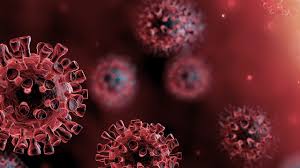Article
Physiologic effects of the SARS-CoV-2 virus
Author(s):
Investigators study the systemic adverse physiologic effects of the virus that causes COVID-19.
Each day seems to bring a new revelation about the effects of the powerful SARS-CoV-2 virus. One of the newest observations is that the virus exerts systemic adverse physiologic effects.
The results of a study of 16 young patients who were recovering or had recovered from the virus, found that regardless of how severe their infections, these patients had sustained negative effects on their sympathetic nervous system compared with healthy control subjects.
Abigail Stickford, PhD, senior author of the study and assistant professor at Appalachian State University’s Department of Health and Exercise Science in Boone, North Carolina, and colleagues, evaluated these patients about 35 days following diagnosis of the virus.

The patients underwent measurements of muscle sympathetic nerve activity (MSNA), systolic and diastolic blood pressures, and heart rate while resting and during a 2-minute cold pressor test and 5 minutes each with 30 and 60 degrees of head-up tilt. The results were compared with 14 age-matched healthy controls.
The patients had significantly (p = 0.020) higher resting MSNA burst frequency than the controls (18.2 ± 6.6 bursts·min−1 and 12.7 ± 3.4 bursts·min−1, respectively) and higher MSNA burst incidence and total activity. The other parameters measured did not differ significantly between the groups.
During the cold pressor test, no differences were seen in the MSNA, heart rates, and systolic and diastolic blood pressures between the groups.
However, the patients reported significantly (p = 0.036) less pain during the cold pressor test compared with the controls. The MSNA also was higher in the patients compared with the controls during the head tilt test.
These results indicated that the resting sympathetic activity, which controls the fight-or-flight response, may be elevated after SARS-CoV-2 infection and that the cardiovascular and perceptual responses to physiologic stress may be altered, i.e., exaggerated (orthostasis) and suppressed (pain perception) responses compared with healthy young adults, the investigators explained.
In commenting on the findings, Stickford emphasized that these patients were followed for about 6 months following their diagnosis and they should be evaluated for how they changed over time.
These findings in young patients also may have cardiovascular implications for older patients infected with the SARS-CoV-2 virus.
Reference
1.Stute NL, Stickford JL, Province VM, et al. COVID-19 is getting on our nerves: Sympathetic neural activity and hemodynamics in young adults recovering from SARS-CoV-2. J Physiol. Published 26 June 2021; https://doi.org/10.1113/JP281888
Newsletter
Don’t miss out—get Ophthalmology Times updates on the latest clinical advancements and expert interviews, straight to your inbox.




